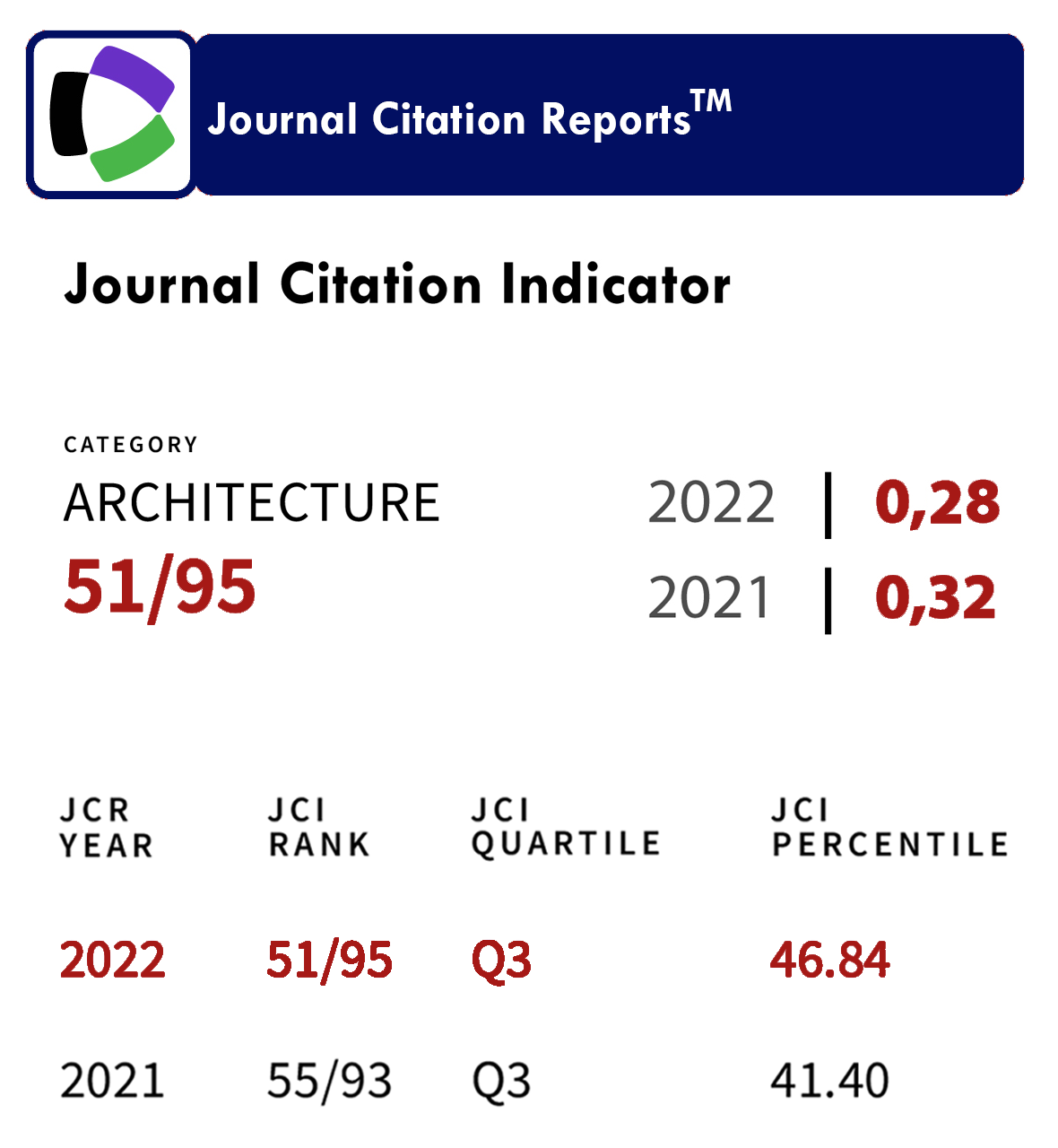The Material Cultures of the Iranian Home: Cultural Reading
DOI:
https://doi.org/10.18537/est.v011.n022.a02Keywords:
home , cultural values, privacy, the material cultures of home, IranianAbstract
This study aims to identify the main components of the material cultures of Iranian homes. Accordingly, based on the grounded theory, content analyses of plans, diagrams, interviews, and field observations are done. An expert sampling as a type of purposive sampling is used for choosing Iranian traditional houses. The results show core concepts of the material cultures of the Iranian home are confidentiality (Hijab), collaboration, purification, contentment, obedience and submission, and humility. In the form of division of paths (porch), defined communications of spaces, use of different door knockers at the entrance, observance of hierarchy, and access from public to private spaces are defined confidentiality. The second important cultural concept of these homes is the obedience and submission that are induced by religious signs and abstract decorations in the interior space. Humility is also emphasized by avoiding showing off and ostentation and aligning the body and facade of houses with the environment. It seems that the material cultures of the Iranian home have the capability to be the architectural patterns of houses, but when are combined with privacy values and feminine principles.
Downloads
References
Ahrentzen, S. (1997). The meaning of home workplaces for women. In J. P. Jones, H. J. Nast & S. M. Roberts (Eds.) Thresholds in feminist geography: Difference, methodology, representation, (pp. 77-92). Rowman & Littlefield.
Atkinson, R., Dowling, R., & McGuirk, P. (2009). Home/Neighbourhood/City/+. Environment and Planning A: Economy and Space, 41, 2816-2822.
Banks, M. (2018). Using visual data in qualitative research (Vol. 5). Sage.
Blunt, A. (2005). Cultural geography: cultural geographies of home. Progress in human geography, 29(4), 505-515.
Boccagni, P., & Kusenbach, M. (2020). For a comparative sociology of home: Relationships, cultures, structures. Current Sociology, 68(5), 595-606.
Burckhardt, T. (2009). Art of Islam: language and meaning. World Wisdom, Inc.
Canter, D. (1997). The facets of place. In Toward the integration of theory, methods, research, and utilization (pp. 109-147). Springer.
Chamberlain-Salaun, J., Mills, J., & Usher, K. (2013). Linking Symbolic Interactionism and Grounded Theory Methods in a Research Design:From Corbin and Strauss’ Assumptions to Action. SAGE Open, 3(3), 1-10. https://doi.org/10.1177/2158244013505757
Chapman, T., & Hockey, J. (1999). Ideal homes? Social change and domestic life. Routledge.
Chapman, T., & Hockey, J. (2002a). The ideal home as it is imagined and as it is lived. In Ideal Homes? (pp. 11-23). Routledge.
Chapman, T., & Hockey, J. (2002b). Ideal Homes?: Social Change and the Experience of the Home. Routledge.
Chevalier, S. (1999). The French two-home project: materialization of family identity. In I. Cieraad (Ed.) At home: An anthropology of domestic space, (83-94). Syracuse University Press .
Chevalier, S. (2002). The cultural construction of domestic space in France and Great Britain. Signs: Journal of Women in culture and society, 27(3), 847-856.
Chevalier, S. (2012). Material cultures of home. International Encyclopedia of Housing and Home. Elsevier.
Chevalier, S. (2014). Turning commodities into presents. Journal of Classical Sociology, 14(1), 54-64.
Cieraad, I. (2006). At home: an anthropology of domestic space. Syracuse University Press.
Cupers, K. (2017). Human territoriality and the downfall of public housing. Public Culture, 29(1 (81)), 165-190.
Darke, J. (2002). Women and the meaning of home. In Housing women (pp. 19-35). Routledge.
Davidoff, L., & Hall, C. (2018). Family fortunes: Men and women of the English middle class 1780-1850. Routledge.
Dovey, K. (1985). Home and homelessness. In Home environments (pp. 33-64). Springer.
Dowling, R. (2012). Privacy, sanctuary and privatism. In International encyclopedia of housing and home (pp. 367-371). Elsevier.
England, K. (2010). Home, work and the shifting geographies of care. Ethics, Place and Environment, 13(2), 131-150.
Flick, U. (2018). Designing qualitative research. Sage.
Gleadle, K. (2007). Revisiting Family Fortunes: reflections on the twentieth anniversary of the publication of L.
Davidoff & C. Hall (1987) Family Fortunes: men and women of the English middle class, 1780–1850 (London: Hutchinson). Women's History Review, 16(5), 773-782.
Gorman-Murray, A. (2012). Experiencing home: sexuality. International Encyclopedia of Housing and Home. (Vol. 2). Elsevier.
Griffiths, S. (2017). Space syntax as interdisciplinary urban design pedagogy. In Explorations in Urban Design (pp. 183-194). Routledge.
Gustafson, P. (2001). Meanings of place: Everyday experience and theoretical conceptualizations. Journal of environmental psychology, 21(1), 5-16.
Hennink, M. M., & Kaiser, B. N. (2020). Saturation in qualitative research. SAGE Publications Limited.
Jacobson, K. (2012). Philosophical perspectives on home.
Knoblauch, J. (2020). The Architecture of Good Behavior: Psychology and Modern Institutional Design in Postwar America. University of Pittsburgh Press.
Kyngäs, H., & Kaakinen, P. (2020). Deductive Content Analysis. In H. Kyngäs, K. Mikkonen, & M. Kääriäinen (Eds.), The Application of Content Analysis in Nursing Science Research (pp. 23-30). Springer International Publishing. https://doi.org/10.1007/978-3-030-30199-6_3
Lambert, M. (2019). Grounded theory. Routledge.
Leith, K. H. (2006). “Home is where the heart is… or is it?”: A phenomenological exploration of the meaning of home for older women in congregate housing. Journal of Aging studies, 20(4), 317-333.
Liu, C. (2021). Rethinking the timescape of home: Domestic practices in time and space. Progress in human geography, 45(2), 343-361.
Lloyd, J. (2012). Meanings of home in popular culture. In International Encyclopedia of Housing and Home (pp. 257-261). Elsevier.
Low, J. (2019). A pragmatic definition of the concept of theoretical saturation. Sociological Focus, 52(2), 131-139.
Macquarie Dictionary. (2017). Macquarie Concise Dictionary Seventh Edition. Macmillan.
Mallett, S. (2004). Understanding home: a critical review of the literature. The sociological review, 52(1), 62-89.
Mamani, H., Haghir, S., & Barati, N. (2017). The Early Islamic Centuries: a Criterion for the Impact of Religious Beliefs on Architecture and Decoration of Iran. Journal of History Culture and Art Research, 5(4), 321-329.
Memarian, G., & Brown, F. (2006). The shared characteristics of Iranian and Arab courtyard houses. Courtyard housing: Past, present and future, 21-30.
Memarian, G., & Sadoughi, A. (2011). Application of access graphs and home culture: examining factors relative to climate and privacy in Iranian houses. Scientific Research and Essays, 6(30), 6350-6363.
Nabavi, F., & Ahmad, Y. (2016). Is there any geometrical golden ratio in traditional Iranian courtyard houses? ArchNet-IJAR: International Journal of Architectural Research, 10(1), 143.
Nari Qomi, M. o., & Momtahen, M. (2020). The Continuity of the Extended Family Structure within Contemporary Single-Family Houses Case Study: Afghan Immigrant Households in Iran. Journal of Iranian Architecture Studies, 1(16), 133-151.
Nejad, J. M., & Abad, A. S. H. (2016). Expressions of islamic ideas and foundations in the noble iranian-islamic architecture,(Case study: Khan School in Shiraz). Journal of Fundamental and Applied Sciences, 8(3), 1115-1131.
Peil, T. (2020). Home. In A. Kobayashi (Ed.), International Encyclopedia of Human Geography (Second Edition) (pp. 53-57). Elsevier. https://doi.org/https://doi.org/10.1016/B978-0-08-102295-5.10193-3
Pirnia, M. K. (2005). Introduction to Islamic architecture of Iran. Soroosh Danesh.
Porteous, J. D. (1976). Home: The territorial core. Geographical Review, 66 (4), 383-390.
Raviz, S. R. H., Eteghad, A. N., Guardiola, E. U., & Aira, A. A. (2015). Iranian courtyard housing: The role of social and cultural patterns to reach the spatial formation in the light of an accentuated privacy. ACE: architecture, city and environment, (29), 11-30.
Razavizadeh, A. S. (2020). Representation of Sustainable Archy Type in the Architecture of the Past and Present of the Iranian House (Kashan and Yazd Houses, Qajar and Contemporary Period). Iran University of Science & Technology, 8(2), 61-75.
Refaat, A. M. (2019). Space Syntax Theory and Its Contribution to Urban Design. In Handbook of Research on Digital Research Methods and Architectural Tools in Urban Planning and Design (pp. 203-222). IGI Global.
Safarian, P., & Azar, A. (2020). A survey of the effect of cultural roots of society on design of house architecture (Case study: Traditional culture of Iran society, Iranian-Islamic houses). KURMANJ; The Journal of Culture, Humanities and Social Science, 2(3), 1-7.
Salvini, A. (2019). The methodological convergences between symbolic interactionism and constructivist grounded theory. Przegląd Socjologii Jakościowej, 15(3), 10-29.
Saunders, P. (1989). The meaning of ‘home’in contemporary English culture. Housing studies, 4(3), 177-192.
Saunders, P., & Williams, P. (1988). The constitution of the home: towards a research agenda. Housing studies, 3(2), 81-93.
Sebba, R., & Churchman, A. (1983). Territories and territoriality in the home. Environment and Behavior, 15(2), 191-210.
Smith, S. J. (2012). International encyclopedia of housing and home (Vol. 7). Elsevier.
Soflaei, F., Shokouhian, M., & Zhu, W. (2017). Socio-environmental sustainability in traditional courtyard houses of Iran and China. Renewable and Sustainable Energy Reviews, 69, 1147-1169.
Soleymanpour, R., Parsaee, N., & Banaei, M. (2015). Climate comfort comparison of vernacular and contemporary houses of Iran. Procedia-Social and Behavioral Sciences, 201, 49-61.
Somerville, P. (1997). The social construction of home. Journal of architectural and planning research, 14 (3), 226-245.
van Nes, A., & Yamu, C. (2021). Introduction to space syntax in urban studies. Springer Nature.
Wardhaugh, J. (1999). The unaccommodated woman: Home, homelessness and identity. The sociological review, 47(1), 91-109.
Published
How to Cite
Issue
Section
License
Copyright (c) 2022 Estoa. Revista de la Facultad de Arquitectura y Urbanismo

This work is licensed under a Creative Commons Attribution-NonCommercial-ShareAlike 4.0 International License.
The Journal declines any responsibility for possible conflicts derived from the authorship of the works that are published in it.
The University of Cuenca in Ecuador conserves the patrimonial rights (copyright) of the published works and will favor the reuse of the same ones, these can be: copy, use, diffuse, transmit and expose publicly.
Unless otherwise indicated, all contents of the electronic edition are distributed under a Creative Commons Attribution-NonCommercial-ShareAlike 4.0 International License.






